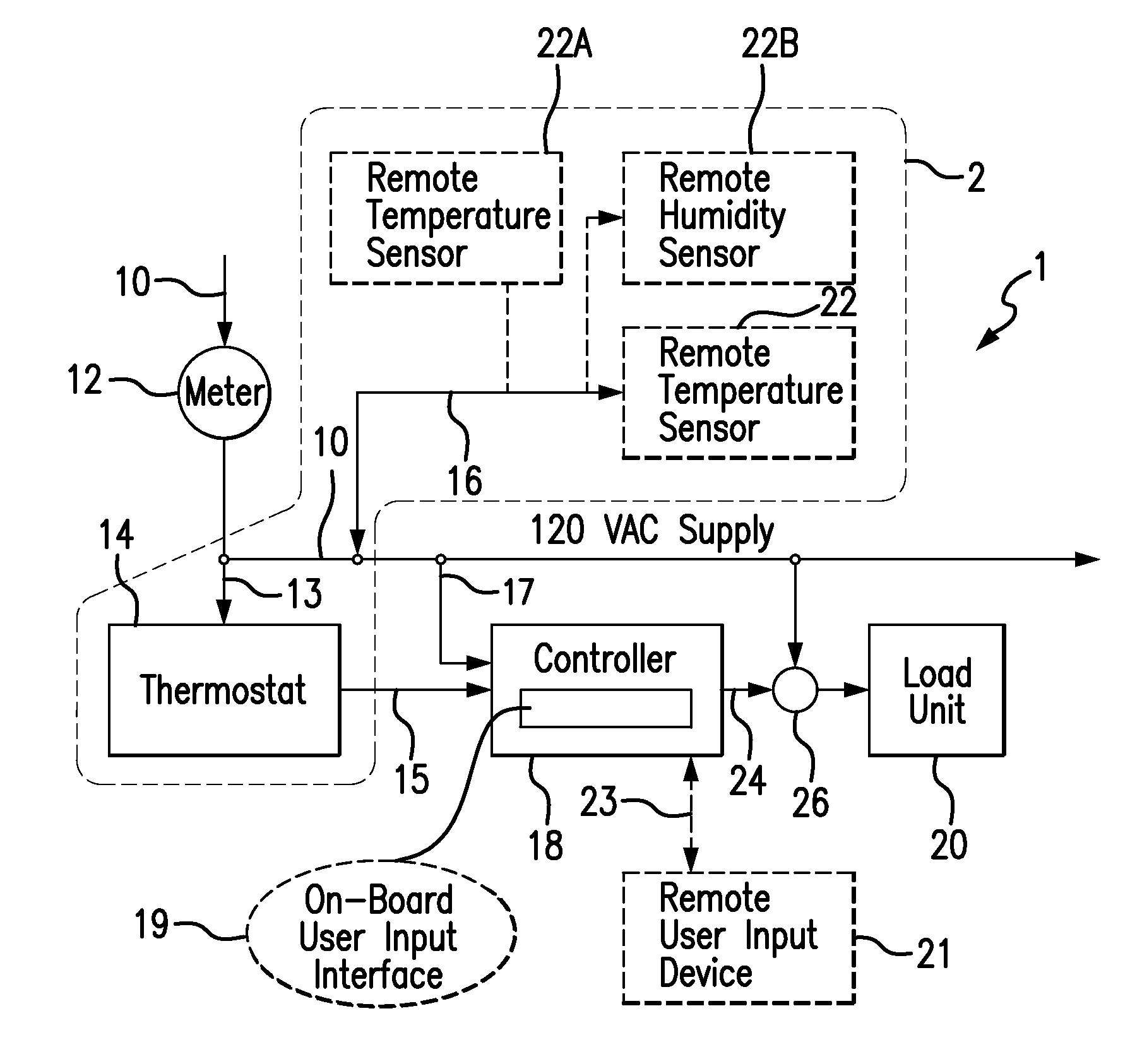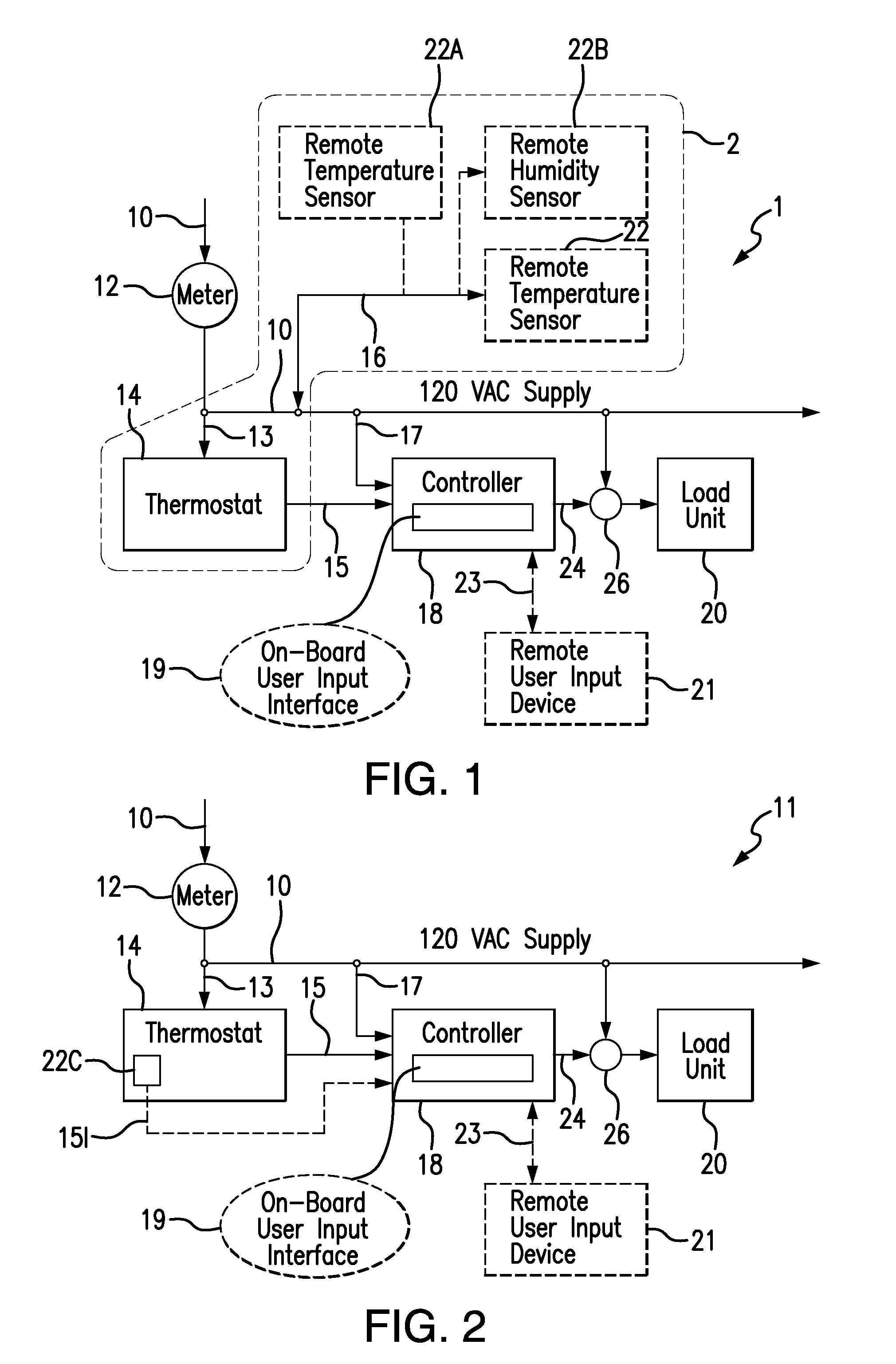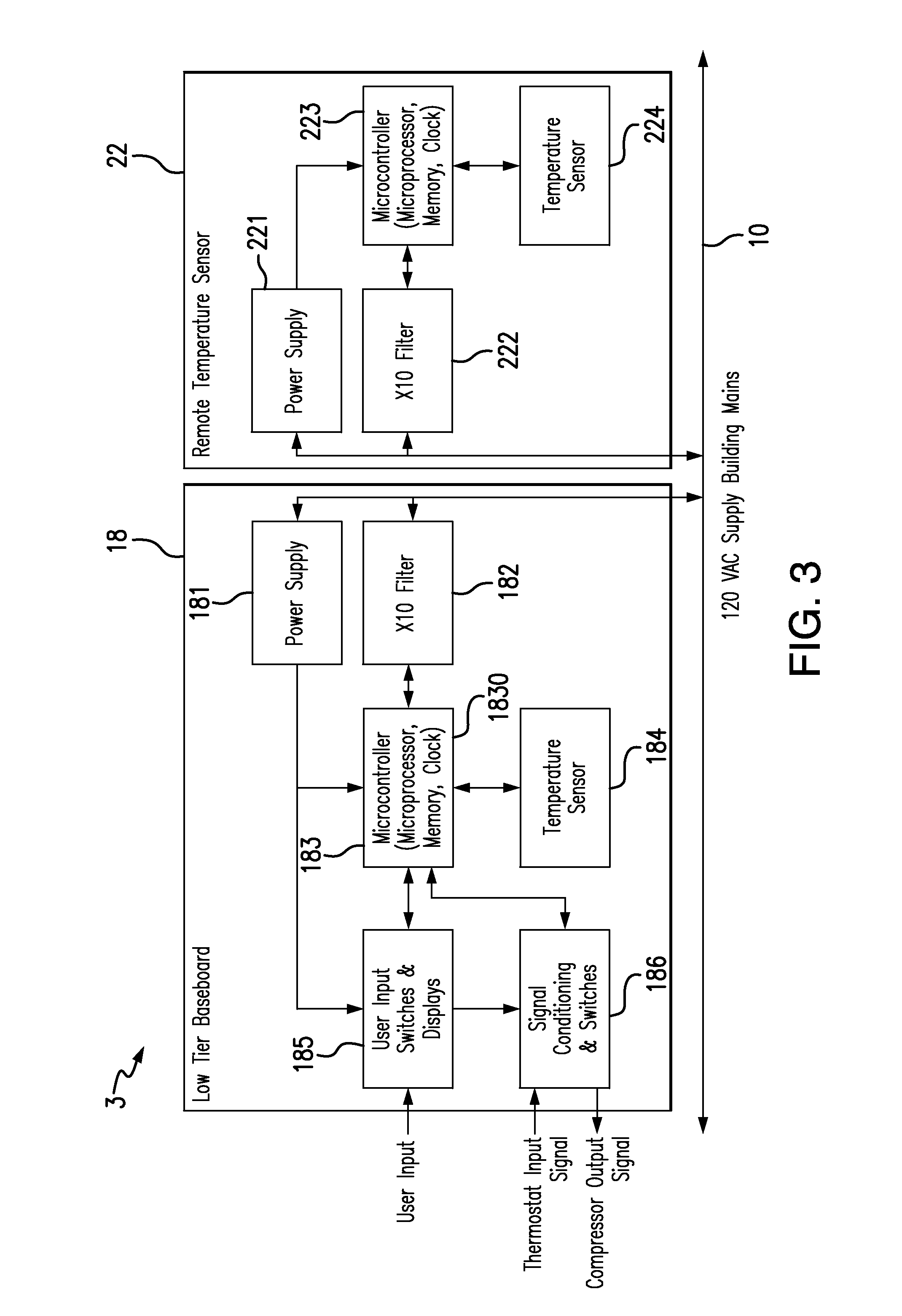Controller For Automatic Control And Optimization Of Duty Cycled HVAC&R Equipment, And Systems And Methods Using Same
a technology of automatic control and optimization, applied in the field of electronic controllers, can solve the problems of difficult retrofitting existing installations with these methodologies, inability to take advantage of these energy related improvements, and inability to add a conventional energy saving methodology to an existing hvac&r system,
- Summary
- Abstract
- Description
- Claims
- Application Information
AI Technical Summary
Benefits of technology
Problems solved by technology
Method used
Image
Examples
example 1
[0115]This example illustrates the temperature behavior of the conditioned space while operating the algorithm in the minimum energy mode for a cooling application. In the three plots shown in FIGS. 15, 16, and 17, FIG. 15 shows the behavior of the OEM control (“OEM Control Command”) and its corresponding conditioned space temperature (above). The conditioned space temperature varies between high and low deadband values (68° F. and 66° F.). The OEM temperature setpoint value is halfway between the deadbands and denoted as T*. The control objective of the OEM thermostat is to maintain the conditioned space temperature at T* with variations not to exceed the high and low deadband values.
[0116]The plots of FIGS. 16 and 17 show two DRC control signals and their associated conditioned space temperatures for two different settings of the weight parameters. In the plot of FIG. 16, the parameters of the indicated formula for calculating the performance index (“J”) are set to Q=10, R=1, and ...
example 2
[0118]This example illustrates the temperature behavior of the conditioned space while operating the algorithm in the power limit mode for a cooling application. In the two plots of FIGS. 18 and 19, the plot of FIG. 18 shows the behavior of the OEM control (“OEM Control Command”) and its corresponding conditioned space temperature (above). The conditioned space temperature varies between high and low deadband values (T-hi and T-lo). The OEM temperature setpoint value is halfway between the deadbands and denoted as T*. The control objective of the OEM thermostat is to limit or minimize the runtime during time intervals of t1 time units or less (this is illustrative and chosen as the “on” time of the OEM controller). This time value may correspond to the time window used for calculation of the electrical demand charge (15 or 30 minutes typically). A second objective is for the DRC algorithm to maintain the same temperature setpoint as the OEM controller.
[0119]In the plot of FIG. 19, t...
PUM
 Login to View More
Login to View More Abstract
Description
Claims
Application Information
 Login to View More
Login to View More - R&D
- Intellectual Property
- Life Sciences
- Materials
- Tech Scout
- Unparalleled Data Quality
- Higher Quality Content
- 60% Fewer Hallucinations
Browse by: Latest US Patents, China's latest patents, Technical Efficacy Thesaurus, Application Domain, Technology Topic, Popular Technical Reports.
© 2025 PatSnap. All rights reserved.Legal|Privacy policy|Modern Slavery Act Transparency Statement|Sitemap|About US| Contact US: help@patsnap.com



